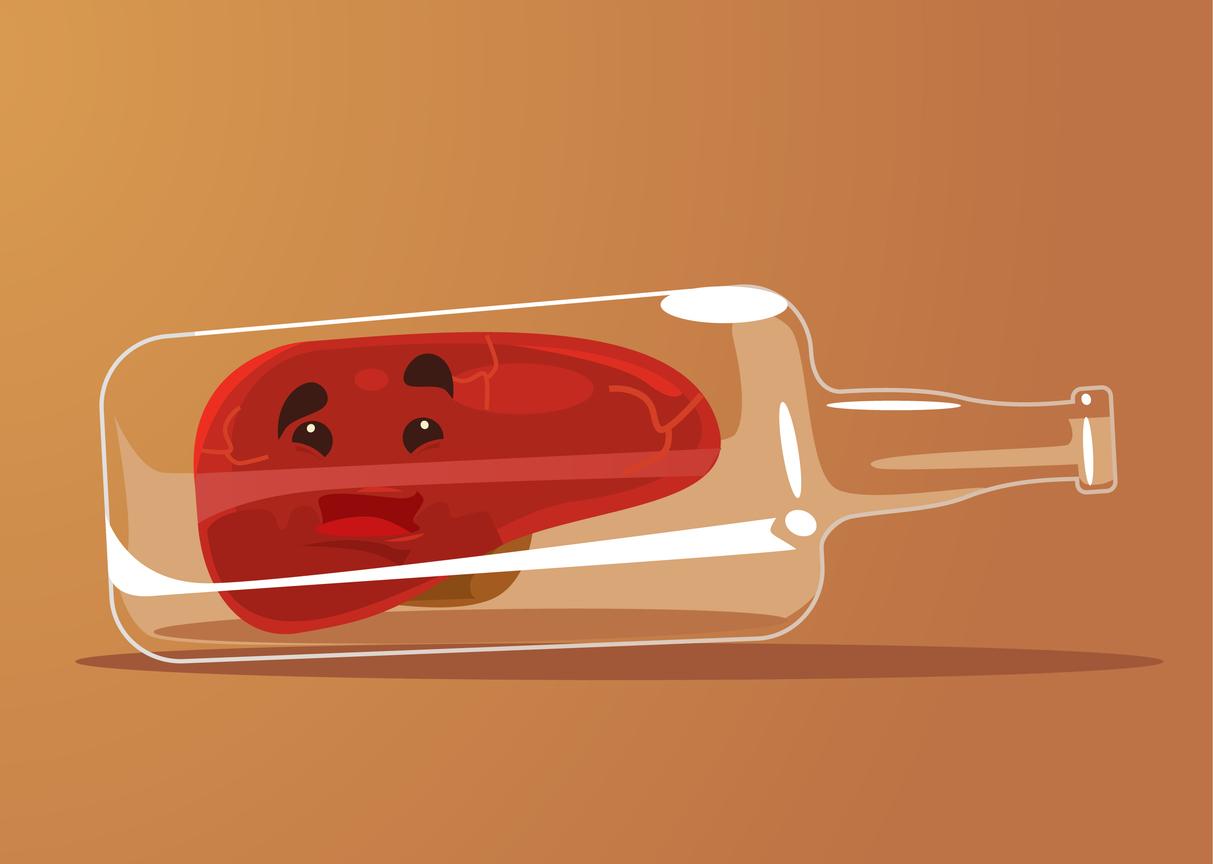French researchers have just demonstrated that there is not just one form of steatohepatitis associated with metabolic dysfunction (MASH), formerly known as NASH, but two.

- MASH, formerly known as NASH, is the most common chronic liver disease, with nearly 20% of adults worldwide affected.
- French researchers discovered that there were two different forms of the disease.
- There is a genetic form and a cardio-metabolic form.
Nearly 20% of the population suffers from steatohepatitis associated with metabolic dysfunction (MASH), better known as fatty liver disease or NASH.
A team from Lille University Hospital has just made a major discovery in collaboration with Inserm, Inria, CNRS and the Institut Pasteur de Lille: there is not a single form of this disorder characterized by an accumulation of fats in the liver, but two.
Their work was presented in the journal Nature Medicine in December 2024.
Fatty liver disease: two forms identified using AI
Noticing that the evolution of MASH varied greatly from one patient to another, French researchers wondered if there were not several types of fatty liver disease. To answer their question, they took the files of several cohorts and used artificial intelligence to analyze them.
By sifting through clinical and liver biopsy data from 1,800 patients, the algorithm developed by the team identified two distinct profiles based on six clinical variables: body mass index, enzyme level hepatic alanine aminotransferase (ALT), age, LDL cholesterol level, triglyceride level (a type of fatty acid), and HbA1c level (average blood glucose level).
More precisely, the first group is distinguished mainly by elevated triglycerides and HbA1c levels while the other presents an abnormal level of the liver enzyme ALT.
MASH: different shapes with different complications
After this first discovery, scientists continued their research and identified two forms of MASH:
- Genetics: patients who have abnormal levels of the liver enzyme ALT develop “a liver-specific MASH, of genetic origin, characterized by hepatic dysfunction which leads the liver to produce fatty acids which accumulate inside this organ”.
- Cardiometabolic: patients with high levels of triglycerides and HbA1c have “a cardio-metabolic type MASH”. In this case, circulating lipids are imported into the liver via the blood.
“These two forms cannot be distinguished by the liver biopsy which is used to diagnose MASH and which only allows us to note the association of steatosis and inflammation in the liver. On the other hand, we show here that the physiopathological mechanisms leading to the appearance of these two forms of the disease as well as their progression differ.specifies Stefano Romeo, Swedish specialist in metabolic diseases and associate researcher at the University of Lille in a press release sent to the editorial staff.
Researchers have noticed that the liver-specific genetic form of MASH affects younger people and causes serious liver disease. On the other hand, that of the cardio-metabolic type mainly increases the risks of type 2 diabetes and the occurrence of cardiovascular accidents.
“This work makes it possible to stratify MASH cases into two distinct endotypes, each characterized by specific biological mechanisms and a different clinical progression”summarizes Professor François Pattou.
“This is an important step forward towards precision medicine, with the idea that in the future we could adapt the treatment of patients according to the type they suffer from. In particular, several drugs are in development to fight against this disease, with heterogeneous results. It would be useful to evaluate them separately according to the type of MASH.specifies Professor Philippe Mathurin, hepatologist, also involved in the project.

















